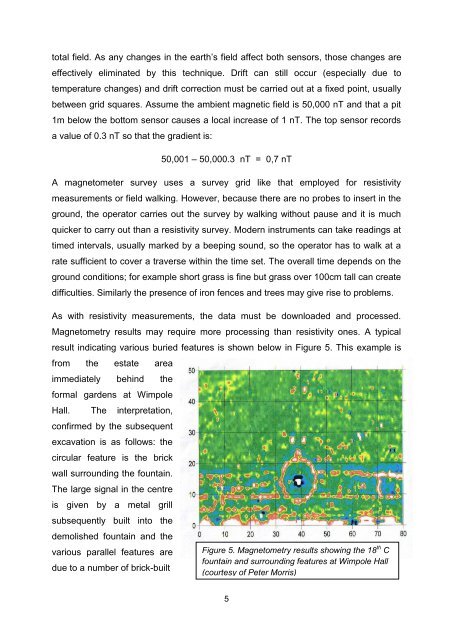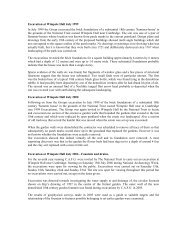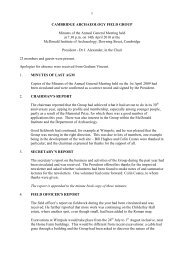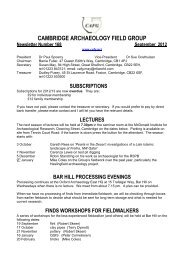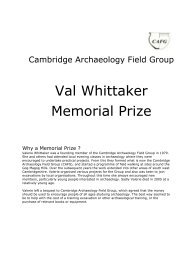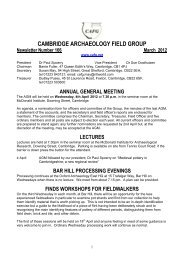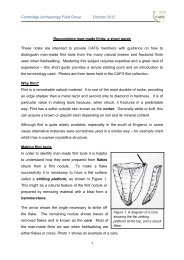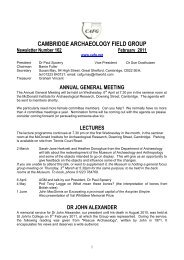What is Geophysics? - Cambridge Archaeology Field Group
What is Geophysics? - Cambridge Archaeology Field Group
What is Geophysics? - Cambridge Archaeology Field Group
You also want an ePaper? Increase the reach of your titles
YUMPU automatically turns print PDFs into web optimized ePapers that Google loves.
total field. As any changes in the earth’s field affect both sensors, those changes areeffectively eliminated by th<strong>is</strong> technique. Drift can still occur (especially due totemperature changes) and drift correction must be carried out at a fixed point, usuallybetween grid squares. Assume the ambient magnetic field <strong>is</strong> 50,000 nT and that a pit1m below the bottom sensor causes a local increase of 1 nT. The top sensor recordsa value of 0.3 nT so that the gradient <strong>is</strong>:50,001 – 50,000.3 nT = 0,7 nTA magnetometer survey uses a survey grid like that employed for res<strong>is</strong>tivitymeasurements or field walking. However, because there are no probes to insert in theground, the operator carries out the survey by walking without pause and it <strong>is</strong> muchquicker to carry out than a res<strong>is</strong>tivity survey. Modern instruments can take readings attimed intervals, usually marked by a beeping sound, so the operator has to walk at arate sufficient to cover a traverse within the time set. The overall time depends on theground conditions; for example short grass <strong>is</strong> fine but grass over 100cm tall can createdifficulties. Similarly the presence of iron fences and trees may give r<strong>is</strong>e to problems.As with res<strong>is</strong>tivity measurements, the data must be downloaded and processed.Magnetometry results may require more processing than res<strong>is</strong>tivity ones. A typicalresult indicating various buried features <strong>is</strong> shown below in Figure 5. Th<strong>is</strong> example <strong>is</strong>from the estate areaimmediately behind theformal gardens at WimpoleHall. The interpretation,confirmed by the subsequentexcavation <strong>is</strong> as follows: thecircular feature <strong>is</strong> the brickwall surrounding the fountain.The large signal in the centre<strong>is</strong> given by a metal grillsubsequently built into thedemol<strong>is</strong>hed fountain and thevarious parallel features aredue to a number of brick-builtFigure 5. Magnetometry results showing the 18 th Cfountain and surrounding features at Wimpole Hall(courtesy of Peter Morr<strong>is</strong>)5


